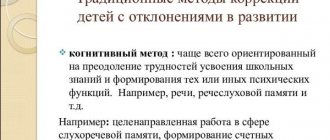Nadezhda Matveeva
Exercises to develop phonemic awareness
Exercises to develop phonemic awareness.
phonetically clear speech in children It is possible to prepare a child well for school and create the basis for learning to read and write only through serious work on the development of phonemic awareness .
Professor R. E. Levina, within the framework of the psychological and pedagogical classification of speech disorders, identified a group of children with phonetic-phonemic underdevelopment of speech (FFN)
.
These include children with normal physical hearing and intelligence, who have impaired pronunciation and special phonemic hearing .
What is phonemic awareness and phonemic awareness ?
Phonemic hearing is a subtle , systematized hearing that allows you to distinguish and recognize phonemes of your native language . Being part of physiological hearing, it is aimed at correlating and comparing audible sounds with their standards.
The concept of “ phonemic hearing ”
should be distinguished from the concept of
“
phonemic awareness ” .
normally developing child hears the sounds of the surrounding world, sees the articulatory movements of adults and tries to imitate them. At the same time, the child is faced with different sounds of phonemes of his native language : the same sounds are pronounced differently by adults and children, men and women. But these sound shades do not serve to distinguish the sound shells of linguistic units.
According to N.I. Zhinkin, the signs of sound include the encoding processes themselves, which occur during the transition of a signal from the periphery of the nervous system to the center.
It has been established that already at the early stages development , the child picks up some differential features of phonemes . A three-year-old child may not yet pronounce the sounds of his native language correctly, but he is able to determine whether they sound correctly in the speech of others. This phenomenon is possible due to the presence of phonemic hearing and phonemic perception .
Phonemic awareness is the ability to distinguish phonemes and determine the sound composition of a word. How many syllables are in a word? How many sounds are there in a word? What consonant sound comes at the end of a word? What is the vowel sound in the middle of a word? It is phonemic awareness that helps answer these questions.
Work on the formation of phonemic perception involves the following sequence:
• At the first stage of teaching sound analysis, the vowel sounds a, u, i are used. Children determine the first vowel sound at the beginning of a word, the sequence of vowel sounds (for example, ay - 1st a; 2nd - y)
.
• Next, the analysis and synthesis of the reverse syllable type an, ut is carried out. Children learn to isolate a consonant from the end of a word (cat, poppy)
.
They then proceed to isolate the initial consonants and stressed vowels from the position after the consonants (home, there)
.
• Next, children master the analysis and synthesis of a direct syllable like sa. Children learn to divide a word into syllables and make diagrams.
• Then children master a complete sound-syllable analysis of monosyllabic three-sound (poppy)
and two-syllable
(goat)
words and make up corresponding diagrams.
• Further complication of the material involves the analysis of words with a combination of consonants (table, trisyllabic (ditch)
.Terms are learned: syllable, consonant sounds, dull, hard, soft sounds.
• At the same time, children become familiar with letters, which are then combined into syllables. It is important that from the very first exercises, you should strive to ensure that the child reads syllables. It is necessary to ensure that children understand the words and sentences read.
Examples of practical tasks and games for the development of phonemic hearing , perception , auditory attention and memory.
“If you hear it, clap”
.
Goals: develop auditory attention , phonemic perception .
Progress of the game. An adult pronounces a series of sounds (syllables, words; a child with his eyes closed, hearing a certain sound, claps his hands.
"Who is bigger?"
Goals: develop phonemic awareness , auditory attention.
Progress of the competition game. Children select words that begin with a given sound. (Repetitions are not allowed.)
"Attentive Listener"
(or
"Where is the sound?"
).
Goals: develop phonemic awareness , attention.
Progress of the game. The adult pronounces the words, and the children determine the place of the given sound in each of them.
"The Right Word"
.
Goals: develop phonemic awareness , phonemic representation , phonemic analysis .
Progress of the game. On instructions from an adult, children pronounce words with a certain sound at the beginning, middle, and end of the word.
"Sharp Eye"
Goals: develop phonemic awareness , phonemic analysis , attention.
Progress of the game. Children are asked to find objects in the environment that have a given sound in their names and determine its place in the word.
"Wonderful artist"
Goals: develop phonemic awareness , phonemic analysis , attention, fine motor skills.
Progress of the game. Draw pictures for the indicated sound at the beginning, middle, and end of the word. Under the pictures, based on the level of knowledge of the children, it is proposed to draw a diagram of the word in the form of a line or a diagram of the syllables of a given word, in which each syllable is indicated by an arc, and indicate the location of the sound being studied.
"Memory"
.
Goals: develop auditory attention , memory.
Progress of the game. The adult pronounces a series of words, and the children remember and repeat. The first task consists of two words, then their number gradually increases (three, four, five, etc., for example:
garden-sleigh
juice-shock
bag—soup—boots
hat—son—fur coat
When selecting appropriate speech material during the game, work can be carried out on automation and differentiation of sounds, development of phonemic perception , phonemic representations .
"Beads"
Goals: develop phonemic awareness , analysis, auditory attention, memory.
Phonemic hearing and features of its development in children
The ability to listen begins to manifest itself in the fetus already in the second trimester of pregnancy, and already at the age of several weeks the baby’s reaction to speech can be noted. From the first days of life, active work on the formation of phonemic hearing begins in the newborn’s brain - a skill inherent only to humans and presupposing the presence of the following skills:
- recognize the sounds of your native language;
- compare and understand the difference between them;
- reproduce accurately.
The unique ability to express one’s thoughts in words is considered innate, but the cases of Mowgli’s children described in science show that if in the first 5-6 years of life a child does not hear human language, then it is almost impossible to teach him to speak. This means that the more you talk to your baby from birth, the faster and better his phonemic awareness will develop.
Funny words spoken by children aged 1 to 2 or even 3 years directly reflect the process of complex phonemic “tuning” in the brain. For example, almost no one misses the word “mother” because it is as simple as possible to record and reproduce. But instead of the word “dog,” the child could well say “babaka,” because the sound precedes the shock , and the brain prioritizes it. Over time, when the new word becomes familiar, the child will begin to recognize nuances by ear and try to correct mistakes. Therefore, it is important that adults speak to the child correctly and not condescendingly, although it can be very difficult to resist repeating funny words after a little linguist.
To help your child understand which sounds he is pronouncing incorrectly, first clearly repeat his version of the problem word, and then the correct one. This will make the difference more noticeable.
Games and exercises to develop phonemic awareness
Lessons on the development of phonemic awareness involve not only working with words and text. It is also necessary to train the recognition of non-speech sounds - everyday and natural. This is especially true for children who are not yet ready for verbal exercises.
Toy talk
This exercise is suitable for children 2-3 years old. It is necessary to collect several toys familiar to the baby and make different sounds: a rattle, a squealing duck, a music book, a wind-up monkey. The child turns away and the adult activates one of the objects. The child must determine by ear which of the toys made the sound and label it. This is the easiest stage, and if it does not cause difficulties, it is time to complicate the game. Now not one, but two or several toys “talk” in turn or simultaneously, and the child will have to try to hear them all.
The more varied the sounds, the easier it will be to distinguish them, so for simultaneous listening it is necessary to select noises of different origins, for example, rubber squeaking and grinding.
Who said "meow"?
This game can be played by several people, children or adults. The child turns around, and everyone else sits behind him in a semicircle, pretending to be kittens, one of which meows. The child turns and shows who he thinks said “meow.”
If there are only two players, the rest can be replaced with toys. In this case, the adult will have to meow alone at several kittens, changing their position. This will complicate the game, since the child will no longer be able to focus on the identity of familiar voices.
What else to read: Interactive game “His Majesty Electricity” 2nd grade
Musical hide and seek
Another useful task for little ones, developing the ability to identify the source of sound. For this you will need any singing toy or even your mother's smartphone. The child closes his eyes, and the adult hides the object in an accessible place and turns on the music. Focusing on hearing, the child must find where the melody comes from. Good children's songs in English or another foreign language that the child will need in the future will help complete the learning effect.
Start foreign language lessons at the age of 2-3 years. At this age, the child may already have mastered the phonetic system of his native language, but can still easily reproduce the characteristic sounds of other languages.
Funny pictures
Starting from the age of 3, when the child’s vocabulary accelerates and coherent speech improves, more attention should be paid to exercises on the correct perception and pronunciation of words. Playing with pictures that depict objects with similar names will help identify and correct possible errors. The presenter says the word, and the children show the corresponding image (cat or whale, house or catfish).
Speech therapists identify a number of typical phonemic errors, for example, children often replace words [m] with [n] (“konpot”, “tranway”, “computer”) or [k] with [t] (“tutla”, “Tutushka”) . Such violations can be easily identified by showing the child the corresponding pictures.
Lost words
For this game you need to collect several funny poems in which words can be easily replaced with consonants. For example:
Snow fell on the threshold
The cat cooked cottage cheese.
OR:
We didn't eat or drink
They drowned the snow woman.
Children should listen to the replacement and correct the presenter. The more fun the poem is, the more successful the game will be for preschoolers.
What is missing?
The teacher shows the picture to a child or group of children and pronounces its name, omitting the first letter: “(x) aika”, “(p) omashka”, “(k) apusta”. Children must guess which sound is missing and pronounce it, and then the whole word. In the same way, you can play with the last letter: “tail (t)”, “tree (o)”, “fat (f)”.
In individual lessons, you need to select words that the child can pronounce completely clearly.
If a child has problems pronouncing any sounds, it is easy to focus the exercise on them, but only at the automation stage.
Zaykina piggy bank
The presenter tells the children that the rabbit is going to the store, but instead of money, they ask them to name words starting with the letters that make up the names of the things they need. The rabbit needs a bow, so you need to remember as many words as possible with the letter “l”, then “u” and “k”. After several similar exercises, the presenter says that the rabbit bought some other secret items and invites the children to solve them. To do this, show a series of pictures, from the names of which you need to select the first sounds and form a word from them. For example: “bear”, “anchor”, “turtle”, “ball”.
What does a tailor cut from?
The game is suitable for middle and older preschoolers. The presenter, sitting at a table with a closed front, puts several sheets of decorative materials on his lap: cardboard, ordinary tissue paper, tracing paper, film. After announcing that he is going to cut the clothes, the teacher takes a piece of paper and begins to cut it with scissors, hiding it under the tabletop. Children listen carefully and determine what it sounds like.
If this task turns out to be too difficult, you can do without scissors and simply rustle the craft material under the table.
Turning into words
The leader calls two children and gives them tablets, on each of which a syllable is written, for example “ka” and “re”. The rest of the children must tell them how to stand up to catch the word "river". After exercises with two-syllable words, if there are no difficulties, you can move on to three-syllable words.
An interesting option is a team game. In this case, all participants are given tablets with syllables and are divided into two parts. The players of each team make up as many words as possible from the available syllables, and the teacher records them on the board and keeps score to determine the winner.
What else to read: Didactic game “Put butterflies on flowers”
Count and name
The adult clearly pronounces the word familiar to the children (several times if necessary) and asks them to name the letters:
- where does it start;
- last;
- second;
- penultimate;
- any others sequentially from beginning to end.
The complexity of the game can be easily adjusted by selecting words of different lengths and composition, so it is suitable for preschoolers of any age and even primary schoolchildren.
Verbal chain
Variation of the previous exercise. Children take turns naming words so that each new word begins with the last letter of the previous one. The facilitator controls this process, intervening at his own discretion and giving the task to find a word not for the last, but for the penultimate, second or other letter. Also, if in the original word the desired letter indicates a soft sound, the new one should also start with a soft one.
Voiceless and voiced
The exercise helps children catch and consolidate the difference in the sound of voiced and voiced consonants. Its essence is to invite children to substitute the corresponding sounds into words. To make the process more interesting and therefore more productive, the teacher should prepare sentences with words suitable for the purpose of the game and pictures that illustrate them. For example, the presenter says: “The fisherman went to the river and took with him... a duck!” Or show a picture of a child: “Vanyusha is very small, he only has . cat!" At the end of the sentence you can show a drawing or toy kitten.
Hard and soft
The game is similar to the previous one, only here the hardness and softness of sounds are processed. Children must correct the presenter, who deliberately makes mistakes in words, softening harsh sounds, or vice versa: “There is salt (and) that shines in the sky,” “Mom threw noodles into the soup).”
The exercise should be done at a fast enough pace so that children can hear and correct as many words as possible, practicing automatic switching between sounds.
For this game there is no need to choose pairs of words in which the presence or absence of a soft sign changes the meaning, so there is no need to use pictures.
Heard - slammed
The presenter agrees with the children that he will now read them a story (or simply a series of unrelated words) and they will have to clap their hands as soon as they hear a word that begins with a certain sound. In addition to phonemic awareness, the game trains the attention and reaction of participants. The teacher can ask the children to clap their hands when they hear a quiet sound and when they hear a loud sound, to stomp, the same rule is also suitable for deafness (“river” and “rose”, “butterfly” and “Panama”).
Sing the vowels
The leader pronounces a word of two or more syllables, and the children repeat only vowels, and at the beginning the examples should not contain repeated letters, and the sound [o] should be emphasized. Gradually, the tasks become more complicated: soft and hard vowels alternate, words with “o” and “unstressed” are introduced: “kolobok”, “wind”. This exercise will help you learn how to divide words into syllables and will subsequently give you an idea of diphthongs and the differences in pronunciation of the same vowels in different positions.
During or after playing, discuss with children why vowels are called vowels and what they have to do with singing.
Detectives
Continuation of the previous game. The presenter places 3-4 cards with images of “suspects” in front of the children and clearly pronounces only the vowel sounds of the hidden word. Using this feature, the boys find the correct picture, the name of which was encrypted by the teacher. A more complex option is without pictures, when children need to choose as many words as possible for a given combination of vowels: “aa” (“stick”, “paw”), “ya” (“magnifying glass”, “but no”).
It is not recommended to use the letter “o” without an accent in this game, as this may negatively affect literacy in the future.
Experts believe that imperfect phonemic hearing in children under 2-3 years of age is normal. But if speech problems persist even after reaching this age, you should contact a speech therapist who will determine the cause of the defect and give appropriate recommendations. The earlier you start with your child, the easier it will be to correct difficult to pronounce sounds.
What else to read: Didactic games in mathematics. Number composition games
How to develop?
First, the child learns to navigate everyday sounds: the sound of water, the meow of a cat, the click of a switch. The temporal cortex of the right hemisphere is responsible for this function. Over time, the baby not only reacts to sounds, but also tries to repeat them.
At about eight months, the baby uses only those sounds that are present in his native language.
At normal rates of development, after a year or two, the “little man” is able to complete a simple task (“bring a doll”) or understand a basic question (“where is mommy?”).
To develop phonemic hearing, regular training and exercises are first necessary. They can be done either under the supervision of a speech therapist or at home with your mother. Next we will look at specific examples for each age.
In children 3-4 years old
- At the age of three, a child can distinguish all sounds. The decisive factor in the development of phonemic hearing in him is the development of speech in the process of communicating with other people.
- We show the child various musical instruments: wooden spoons, tambourine, bell. We listen to their sound and play. Then we ask you to turn your back: the child must guess the name of the instrument by ear.
- We introduce our son or daughter to the concepts of “hot” and “cold”. So let's roll the ball. If an adult says “hot”, you cannot touch the ball.
- Together with your child, put cereals, buttons, and pebbles into different bags. Based on the sound, the child will guess what is in each of them.
- An adult shows an image and names the object, specifically replacing the sounds it contains. The child should clap his hands as soon as he hears the correct option. For example, short gate-bort.
In children 5-6 years old
Only those sounds that are pronounced correctly are perceived correctly. This affects vocabulary and literacy development. Understanding the connection between letters and sounds is only possible with clear pronunciation.
- We select two images: with a bear and a mouse. Discuss the first: the bear lives in the forest and sleeps in a den. So remember the mouse: what does it like and where do you find it? We explain that the words sound similar, but their meanings are completely different.
- Say this to your child and feel the difference. In the same way, you can play with other pairs of words: stove-candle, tire-car.
- We show various pictures of objects and ask them to clearly formulate what is depicted in them. If you divide the words into parts, there will only be a plus: bam, bam.
- The child guesses by voice which character you were talking about. In a more complex version, the child himself “tests” various sound intonations: he tries to speak in the voice of a hare, a fox or a robot.
For children 6-7 years old
Many parents are sure that they only need to teach their child letters, and he will immediately begin to read and write. However, this is a big misconception. Memorizing letters does not guarantee that serious difficulties will not arise in learning to write. And most of the errors arise precisely because of problems with phonemic hearing.
- An adult makes a sound and names the word in which it is present. The child must catch this sound: clap his hands when he hears it. First, let's select the words so that the sound is at the very beginning. We gradually complicate the task: we rearrange it in the middle or at the end. After a while, you can read the entire text and just “catch” the sound.
- The adult says a word and throws the ball to the child. The baby must respond with a rhyme and throw the ball back. Let's start with the simplest words. If a child is in trouble, we will suggest the correct answer.
- We suggest listening to a chain of words and then repeating them. We are gradually adding new words. At first you can play with images, but then the emphasis is on auditory memory. Task: remember as many words as possible in a row. An error occurred: the game restarted.
LINK! It will be interesting to play with a child at school, where he is a teacher and an adult is a student. Turn into an unknown person who confuses everything and makes mistakes in everything. Let your child correct your mistakes.








